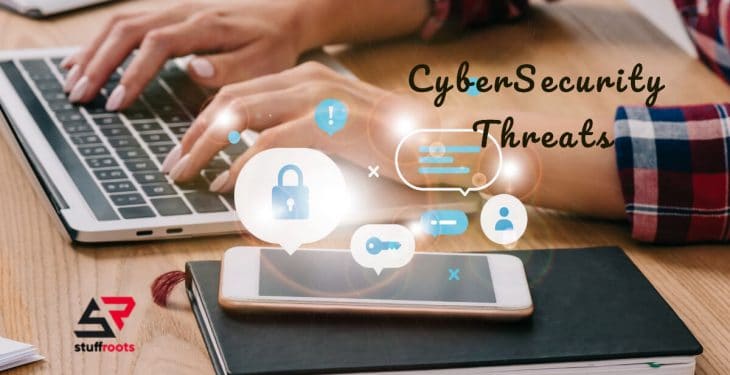Technological advancements have transformed human life more than ever before. Whether it’s paying bills, shopping online, consulting doctors, booking tickets, or taking online courses—almost everything can now be done with just a few clicks from the comfort of your home.
But with this convenience comes an equally significant challenge: digital safety. As we become more connected, we also become more vulnerable to cyber threats. In this fast-paced digital age, understanding what does VPN do is no longer optional—it’s a necessity for protecting your online activity.
Cybersecurity in 2025: Why It Matters More Than Ever
The year 2024 saw a sharp rise in cyberattacks, and this trend will continue in 2025 with more complex and widespread threats targeting both individuals and organizations. From data breaches to phishing and AI-driven attacks, cybercriminals are constantly evolving their tactics.
Let’s explore the Top 10 Cybersecurity Threats to Watch in 2025 and how to protect yourself against them.
🔐 Top 10 Cybersecurity Threats in 2025
1. Phishing Attacks Are Evolving
Phishing remains one of the most common and dangerous cyber threats. In 2025, phishing tactics have become even more sophisticated, using AI to craft realistic emails, messages, and even voice calls that mimic trusted brands or individuals.
-
Over 85,000 phishing sites were reported monthly in early 2025.
-
AI-generated phishing messages can fool even tech-savvy users.
-
Nearly 98% of people struggle to identify a phishing email.
To protect yourself:
-
Always check the sender’s address and avoid clicking on suspicious links.
-
Use SSL certificates to verify site authenticity.
-
A VPN and proxy server can mask your IP and reduce exposure.
2. Endpoint Security for Remote and Hybrid Workforces
As remote and hybrid work continues in 2025, the number of unsecured personal devices accessing corporate data has skyrocketed. This creates weak points for hackers to exploit.
Solution: Organizations must implement strong endpoint detection and response (EDR) systems and enforce device security policies to protect remote access.
3. Cloud Vulnerabilities Still a Major Concern
Despite improved cloud infrastructure, misconfigurations and unauthorized access remain serious threats. The National Security Agency identifies key cloud vulnerabilities, including:
- Supply chain risks
- Shared tenancy flaws
- Weak access controls
- Misconfigured settings
Organizations must conduct regular cloud security audits and limit user access to sensitive data.
4. Attacks on Transport and Smart Vehicles
Transportation infrastructure is increasingly digital and thus more vulnerable. In 2025, attacks on smart vehicles and metro systems have disrupted operations and endangered public safety.
Governments now classify transport cybersecurity as critical infrastructure, requiring urgent protection and 24/7 monitoring.
5. Social Engineering Scams
Cybercriminals use psychology to manipulate people into revealing sensitive data. In 2025, social engineering goes beyond emails—it’s happening on social media, messaging apps, and even via deepfake videos.
Tip: Train employees to recognize psychological tricks and implement strong identity verification procedures.
6. Large-Scale Data Breaches
Data breaches remain a global issue. High-profile cases in 2024 affected major tech firms, healthcare providers, and educational institutions. In 2025, over 300 million records have already been exposed in just the first quarter.
The aftermath includes identity theft, legal consequences, and loss of customer trust.
7. Mobile Malware on the Rise
Smartphones are now digital wallets, health monitors, and personal assistants. With this, mobile malware attacks—especially on Android devices—are increasing dramatically in 2025.
Actionable Advice:
- Use official app stores only
- Install antivirus apps
- Keep your OS updated
8. Cryptojacking: Silent but Dangerous
Cryptojacking involves hackers hijacking your system to mine cryptocurrency without your knowledge. It leads to system slowdowns, increased electricity usage, and exposure to further threats.
With more businesses relying on cloud computing, cryptojacking is becoming a silent financial drain.
9. 5G and Wi-Fi Integration Security Gaps
The rollout of 5G-Wi-Fi hybrid networks has improved connectivity—but also expanded the attack surface. Devices switching between 5G and public Wi-Fi can be exploited if not properly secured.
Fix: Use encrypted connections (VPNs), and avoid public Wi-Fi networks when accessing sensitive information.
10. IoT Devices: Easy Targets for Hackers
From smart homes to connected medical devices, IoT is everywhere. But these devices often lack strong security protocols, making them an easy entry point for attackers.
Recommendations:
- Set unique, strong passwords
- Disable unused features
- Regularly update device firmware
- Adopt a strict IoT cybersecurity policy
🛡️ Final Thoughts: Stay One Step Ahead
Cyberattacks in 2025 have the potential to shut down businesses, steal identities, and cause real-world harm. Digital security is no longer a luxury—it’s a basic necessity.
Here’s how you can protect yourself:
- Use SSL certificates to secure your website and boost trust.
- Consider Wildcard SSL certificates to protect your main domain and all subdomains under one license.
- Invest in VPNs and proxy servers to stay anonymous online.
- Enroll in a reputable Cybersecurity course to stay updated and vigilant.
By adopting strong cybersecurity practices today, you can safeguard your future in this increasingly digital world.






